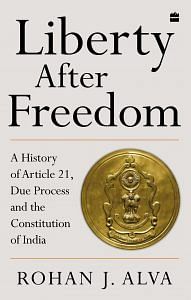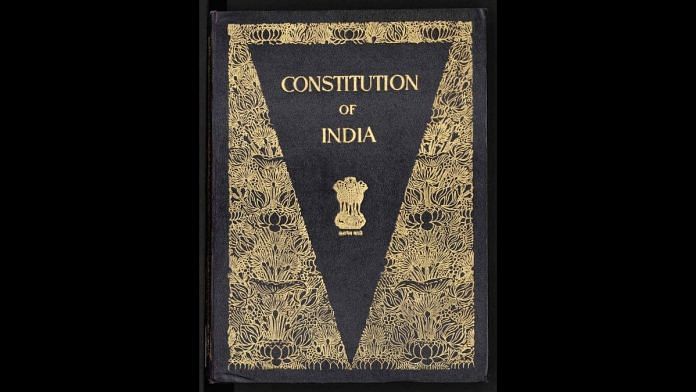When a constituent body votes on a constitution, the words and phrases used in the founding document are assumed to be the result of careful choices and deliberations. For that reason, it is often believed that, in order to be respectful of the efforts that were made by such a constituent body, the constitution must be conceived in a manner consistent with which the framers intended it to be. How then do we understand Article 21? Is there at all the possibility of ascribing some form of original intention or original meaning to Article 21?
When reading Article 21 it may be plausible to take the view that this article was worded with great care and caution and, therefore, through the language and structure of Article 21, the Constituent Assembly intended that the due process guarantee would not be a part of the fundamental right to life and personal liberty. However, given the fraught history of Article 21, and the twists and turns which the due process guarantee underwent from December 1946 to January 1950, it is not possible to ascribe to Article 21 any particular original intention or original meaning.
Original Meaning: A Typology
Theories about interpreting a constitution in terms of its original intent were developed in the context of the American Constitution. In an influential article ‘The Misconceived Quest for the Original Understanding’, the legal scholar Paul Brest proposed that original understanding of a Constitution—originalism—meant attaching ‘binding authority to the text of the Constitution or the intention of its adopters.’ And although many articles in the Constitution may have a clear meaning, other articles are seemingly ‘opentextured.’ Brest presented the numerous difficulties which arose when viewing the Constitution from the lens of originalism, but for the present purpose two important critiques are worth noting.
To begin with, Brest argued that it is quite difficult to ascertain with confidence what each member of the constituent body took an article in the Constitution to mean. Without fully knowing the mental make-up of each member of the constituent body, it is difficult to decide what kind of original meaning is to be attributed to the Constitution. Moreover, an article in the Constitution may only embody a principle, thus presenting a roadmap where future developments are to inform the meaning of the Constitution.
These and other considerations led Brest to observe that the interpretative exercise in determining the original meaning of the Constitution is not an easy task, for the ‘originalist constitutional historian may be questing after a chimera.’
When it comes to deciphering the original meaning of a constitution a variety of methods can be applied. Jack N Rakove sets out a three–part model to understand the original meaning of a constitution.
The first is the ‘Original Meaning’ model where the interpretative exercise undertaken is strictly confined to examining the text of the constitution and analysing the ‘literal wording—the language—of its many provisions.
The second is the ‘Original Intention’ model in which the exercise of constitutional interpretation endeavours to discover the meaning of a constitutional provision as understood by the founders of the Constitution. Here, attention is paid to the ‘purpose and forethought’ which informs the actions of those charged with drafting the Constitution.
The third is the ‘Original Understanding’ model, which shifts the attention of what the Constitution means not in the view of the constituent body, but what it means in the view of the people who are to be governed by it, since one of the modes of bringing a constitution into existence is to have it ratified by the general populace.
Nevertheless, we must also remember that constitutions are a reflection of their time and their implementation can, in fact, render a constitution unworkable. In his magisterial work The Framers’ Coup, the renowned scholar Michael J Klarman offers several examples to show that even though the Framers of the American Constitution worded certain articles with a particular and specific meaning in mind, over which there was broad consensus and not much controversy, those articles were relevant only to the time at which they were ratified.
Also Read: The ghosts of Nehru and Syama Prasad Mookerjee are back. Modi’s India is reliving 1951
Article 21: There Is No Original Intent
One view on Article 21 is that when determining its original intent, it is difficult to interpret this article as affording due process protection primarily because the Drafting Committee had taken a conscious decision to use the phrase ‘procedure established by law.’ In this view, due process cannot be read into Article 21 because the Drafting Committee had after careful deliberation, intended that the due process guarantee ought not to be a part of the fundamental right to life and personal liberty. This view gained easy acceptance in the jurisprudence surrounding Article 21, for the most notable proponent of this viewpoint was the Supreme Court of India.
On 19 May 1950, the Supreme Court handed its decision in AK Gopalan v. State of Madras.13 Gopalan was the first ever case in which the Supreme Court had the opportunity to interpret the meaning of Article 21.14 Gopalan was heard by a Constitution Bench comprising the first Chief Justice of India, Harilal Kania and Justices Fazl Ali, Patanjali Sastri, Meher Chand Mahajan, BK Mukherjea and SR Das.15 One of the questions which arose was whether it was possible to interpret Article 21 as securing due process guarantees.
Three of the justices held that it was not possible to interpret Article 21 as extending any form of due process protection, given that the Drafting Committee had decided not to make any reference to due process in the Draft Constitution.
In Chief Justice Kania’s view, it was impermissible to read Article 21 as containing any due process guarantee, and to even venture to make such an argument would be ‘misleading.’16 Chief Justice Kania engaged in a strict textualist construction of Article 21 to observe that from its plain words, it was impossible to read into it any due process guarantee. Even otherwise the original intent of Article 21 did not allow for due process to be read into it given the fact that the Drafting Committee had, after careful deliberation, decided not to recommend a due process guarantee in the Draft Constitution.
Here we can see that Chief Justice Kania was laying the foundation for the idea that the meaning of Article 21 was to be somewhat brought into accord with what the Drafting Committee had intended it to mean.
Also Read: India’s Constitution makers Nehru, Patel & Ambedkar were divided on parliamentary system
Chief Justice Kania’s observations on the Drafting Committee’s approach to the fundamental right to life and personal liberty resonated with Justice Patanjali Sastri. In his separate judgment, Justice Sastri held that given the ups and downs the due process guarantee went through in the USA, the Drafting Committee had wanted to avoid such a scenario in India, which is what led it to delete the due process guarantee and replace it with what was now Article 21.
For Justice Sastri, in light of the importance of this particular decision of the Drafting Committee, the Supreme Court had to remain respectful of the intent behind the wording of Article 21 and it could not be interpreted to extend either substantive or procedural due process protection. Here too, it was considered proper to use the Drafting Committee’s intent in deleting the due process guarantee, as informing the meaning of Article 21.
The premium placed on the recommendations of the Drafting Committee was reiterated by Justice BK Mukherjea. In his separate judgment, he expressed confidence in the fact that in interpreting the fundamental rights enumerated in Part III of the Constitution, the recommendations contained in the Drafting Committee’s Report provided an important guiding light.
Relying almost exclusively on it, Justice Mukherjea held that when compared with the Constituent Assembly debates, the Drafting Committee’s Report was entitled to a ‘higher value’ and the deliberate deletion of the due process guarantee by the Drafting Committee very clearly meant that Article 21 could not be interpreted as providing due process protection to any person. For Justice Mukherjea, since this was the Drafting Committee’s clear intent behind Article 21, the Supreme Court had to be respectful of it. Essentially for Justice Mukherjea, it would have been completely out of order to read into Article 21 the due process guarantee in the face of the Drafting Committee’s aversion to it.
What is interesting to note is that Justice Mukherjea clearly placed the decision of the Drafting Committee on a higher pedestal but used the phrase ‘framers of the Indian Constitution’ in several places when holding that the framers had taken a conscious decision to not incorporate a due process guarantee in the Constitution. This is a cause for some confusion for it is unclear who Justice Mukherjea treats as the framers of Article 21—the Drafting Committee or the Constituent Assembly as a whole, or both.
Justice Fazl Ali, in his judgment, observed that the plain text of Article 21 made clear that the due process guarantee was not encompassed within it.26 However, for Justice Fazl Ali, this did not mean the unavailability of ordinary procedural safeguards, and here he struck a discordant note.
Unlike the other justices who held that Article 21 did not provide any sort of safeguards when it came to a fair hearing, Justice Fazl Ali observed that despite the phrase ‘procedure established by law’ being used in Article 21, any person who was proceeded against under a law was entitled to a notice being issued, to a hearing, to be judged by persons who were neutral and to otherwise be proceeded against in accordance with the procedure contained in the law. Justice Fazl Ali’s dissent is widely regarded as one of the greatest dissenting judgments in the history of India.
 This excerpt from ‘Liberty After Freedom: A History of Article 21, Due Process and the Constitution of India’ by Rohan J. Alva has been published with permission from Harper Collins.
This excerpt from ‘Liberty After Freedom: A History of Article 21, Due Process and the Constitution of India’ by Rohan J. Alva has been published with permission from Harper Collins.






